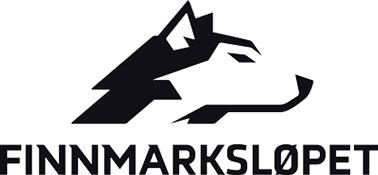About sled dog racing
If you start looking into the origins of sled dog racing, you soon realize that it’s the stuff myths, legends, and tales of adventure are made of. Delving deep into the history of this culture helps understand why this ancient way of traveling through the wilderness and nature is still so fascinating today.
Humans and dogs – traveling together for thousands of years
No one knows exactly when people first started using dogs to pull sleds. What we do know, though, is that various indigenous peoples in Siberia used sled dogs as a means of transport. Later – probably still more than 10,000 years ago – some of the nomadic ethnic groups from northern Eurasia crossed the Bering Strait. This is how the dogs came to North America. The oldest surviving evidence of sled dogs there, such as parts of sleds, was found in northwestern Alaska. The dogs used by the indigenous peoples of Alaska are described as large and strong animals with relatively short but strong legs, but breeding varied greatly between the individual ethnic groups. For example, the indigenous peoples of the Americas used different types of dogs than the Inughuit.
From the dog-drawn mail coach to the racing sled
Even before the Great Gold Rush, the white people who came to Alaska in the 18th century used sled dogs as a means of travel and for transporting loads and goods. Dog sleds were also used for hunting and setting traps in the winter. When gold fever struck at the end of the 19th century, sled dogs became hugely expensive. They became the most important means of transport for all types of equipment, food, and also mail. In a few gold-mining towns, local races were already being held, where the best mushers competed against one another. However, there were no fixed rules, prizes, or specially constructed trails.
This changed at the beginning of the 20th century when the All-Alaska Sweepstakes were launched in the city of Nome. Back then, this former booming gold-mining town on the northwestern coast of Alaska was home to the best mushers. Smaller scale races were already being held then, too. In 1908, the Nome Kennel Club – which was founded to establish and develop dog sledding as a sport – held a big, properly organized race for the first time. The All-Alaska Sweepstakes was 408 miles long and took a circular route through the snow-covered wilderness of Alaska. The event generated much interest among the residents of Nome and was a huge success. Ten teams competed and the winners shared prize money totaling 10,000 dollars. The race took place annually until the end of the First World War in 1918.
A life-or-death race through Alaska
A name that will always be associated with the Sweepstakes is that of Leonhard Sepalla. The Norwegian-born musher won the race with his Siberian huskies the second time he competed, and then won the next two races, as well. But it was another great achievement that made him a legend. When diphtheria broke out in Nome in 1925 and supplies of the city’s diphtheria antitoxin serum were dwindling and had passed their expiration date, only fresh serum could prevent the spread of the deadly disease. However, the nearest available serum was far away in Anchorage. How could this desperately needed medication get from there to Nome? Bush planes were still too unsafe at this time, and the risk was too great, especially in winter. So, the decision was made to take the serum as far as possible by train. At the same time, a team of 20 mushers was put together, which would form a relay to cover the remaining 674 miles (over 1,000 km!) to Nome.
The “Great Race of Mercy” to Nome started on the evening of January 27, 1925. Snowstorms and temperatures as low as -50°C combined with enormous time pressure made the enterprise a matter of life or death. The 47-year-old Sepalla, whose huskies had already run 170 miles before the serum was handed over, completed the longest stretch of the journey. It was probably the most difficult race of his life. After five-and-a-half grueling days, where the participants – both the men and dogs – battled severe frostbite, the serum was delivered intact on the morning of February 2, 1925 and saved many people’s lives.
In the following decades, dog sleds were increasingly replaced by airplanes and later, above all, by snowmobiles. Nevertheless, two more important dog sled races became established during this time: the Fur Rendezvous in Anchorage and the North American Championships in Fairbanks. These three-day races are still the most important sprint races in the world today.
Iditarod – “the last great race on Earth”
But there was still no major race over a really long distance. Joe Redington, a musher and hunt master from Alaska, wanted to change that. With the goal of staging the biggest dog sled race ever and in defiance of his critics, he organized the first Iditarod Trail Race in 1973. This race, which covers over 1,100 miles (approx.1,800 km), mainly follows a mail and supply route that dates back to the Gold Rush. In March 1973, some 50,000 dollars of prize money attracted 34 teams to compete. Only 20 completed the course. Despite all the initial difficulties of organizing a race over such a distance, Redington’s dream had come true and the Iditarod evolved further during the coming years. Today, it’s not only the biggest and best organized dog sled race, it’s also the most strictly monitored. Stringent rules, fixed rest periods, and medical supervision by veterinarians guarantee the best possible safety of the four-legged athletes.
A little shorter but no less fascinating than the Iditarod is the Yukon Quest between Fairbanks (Alaska) and Whitehorse (Canada). This is an annual event, too, and is one of the highlights of the mushing calendar. Among the most important European races are undoubtedly the Finnmarkslöpet and the Femundlöpet in Norway.
It’s important to say here that you can’t compare a sprint over a few kilometers with a long-distance race of more than 1,000 kilometers. And the dogs who participate are often just as different as the races themselves. The dogs all have their specialisms, whether they are short-haired hunting dogs or long-haired furry monsters, whether they weigh 15 or 35 kg.
*To drive a team of dogs over surfaces with snow that’s more than a meter deep, you need a trail. All this is is a path trodden into the snow, which was formerly created exclusively using snowshoes. As the sleds drive along the trails, the snow becomes more compact, making the trails easier and faster to navigate. Today, snowmobiles are often used to cut trails.
Famous sled dog races:

The Last Great Race: the longest an most famous long distance race in the world…














